Unveiling the Melodies of Cuphead Piano Sheet Music
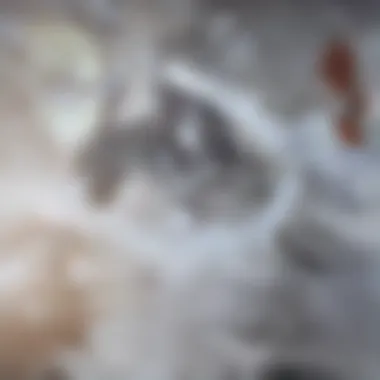
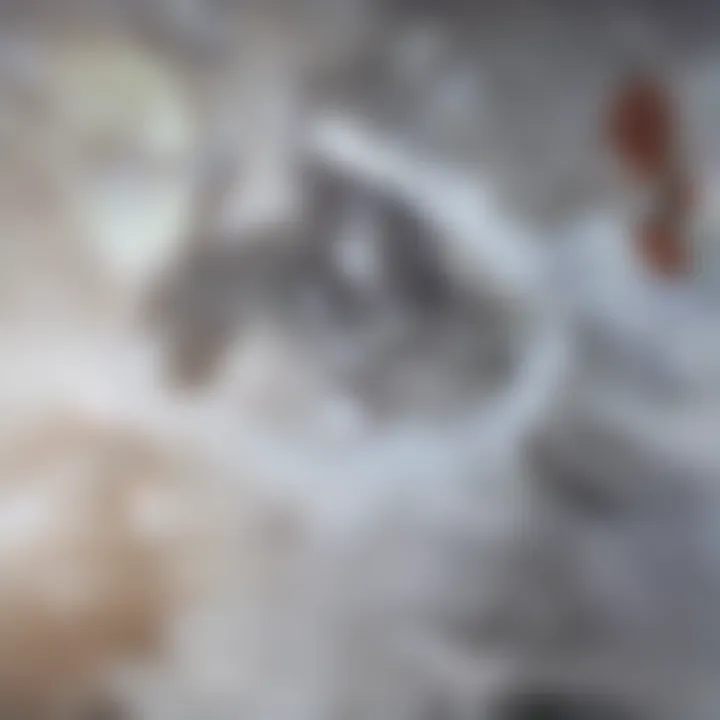
Intro
The music in Cuphead is a remarkable blend of vintage aesthetics and contemporary musical techniques. It plays a pivotal role in shaping the player’s experience, effectively enhancing the visual art style and gameplay mechanics. The complexity of the piano sheet music associated with Cuphead presents a fascinating challenge for musicians. This article will explore the nuances of the game’s musical arrangements, their technical aspects, and cultural relevance. For music enthusiasts, aspiring musicians, and students, a deep dive into Cuphead’s piano compositions offers a unique opportunity to appreciate not just the music, but also the world it helps create.
Artist Profile
Biography and Background
The soundtrack of Cuphead, composed by Kristofer Maddigan, draws from early jazz, big band, and ragtime influences. Born in Canada, Maddigan spent years honing his musical skills, influenced by a variety of genres, notably jazz and classical music. He collaborated closely with the game’s developers to ensure a cohesive experience that matched the game’s aesthetic and narrative.
Major Influences and Inspirations
Maddigan's work on Cuphead showcases his admiration for the music of the 1920s and 1930s. Artists like Louis Armstrong and Duke Ellington resonate throughout the game's tracks. His compositions reflect a meticulous approach to arrangements, employing traditional instrumentation alongside modern techniques. This fusion creates a distinctive sound that elevates the gaming experience to new artistic heights.
Song Analysis
Theme and Lyrics Breakdown
Though Cuphead is primarily an instrumental game, the thematic elements of the music contribute significantly to the narrative. Each track relates to specific levels, characters, or bosses and sets the tone for the player’s journey. The music's playful yet sometimes ominous undertones reflect the game's whimsical yet challenging nature.
Instrumentation and Composition
The compositions in Cuphead employ a rich tapestry of instruments. The arrangements typically feature:
- Piano: Serving as the backbone of the composition, with arpeggios and syncopated rhythms.
- Brass Instruments: Adding a bright, triumphant sound that complements the visual style.
- Strings and Percussion: Enhancing emotional depth and providing rhythmic support.
Maddigan's arrangements often utilize counterpoint techniques, creating layers of melody that invite the listener to engage deeply with the music. This complexity makes the piano sheet music both a rewarding and demanding endeavor for performers.
"The music in Cuphead transcends the boundaries of gaming, becoming a celebrated art form in itself. It illustrates how game soundtracks can foster emotional connection and cultural dialogue."
In the following sections, we will explore the availability of sheet music, the adaptation process for piano, and the broader impact of the Cuphead soundtrack on gaming culture.
Prologue to Cuphead's Music
Cuphead's music serves as a cornerstone of its immersive experience. The combination of visuals and auditory elements creates a unique atmosphere that both engulfs and captivates players. Understanding the musical aspects of Cuphead is essential for grasping the overall impact the game has on its audience. This section delves into the important facets of Cuphead's musical scoring, providing a deeper appreciation of how these elements contribute to gameplay and storytelling.
Overview of the Game's Musical Style
The music in Cuphead is distinctly inspired by the big band and jazz styles, reminiscent of the early 20th-century sound. From the first moments of gameplay, players are greeted with lively and bold melodies. The orchestration is rich, featuring brass, woodwinds, and percussion that come together to create a vibrant sound palette. This musical approach complements the game's hand-drawn animation, enhancing the nostalgic feeling of classic cartoons.
The fusion of traditional jazz elements with modern composition techniques sets Cuphead apart in the gaming world. Composers like Kristofer Maddigan expertly navigate between playful whimsy and dramatic tension, contributing to the game's overall narrative arc. The compositions are holistic, meaning they are not just background music but integral to the game's identity and emotional engagement.
Significance of the Soundtrack
The soundtrack of Cuphead is not merely for entertainment; it plays a crucial role in the game’s success. Firstly, it draws players deeper into the universe created by the developers. The music engages emotions and sets the pacing for gameplay—faster tempos during action-packed sequences can heighten adrenaline levels, while slower pieces provide moments of respite and contemplation.
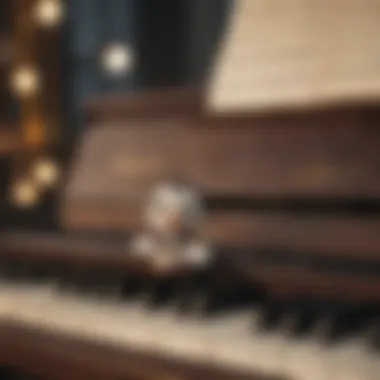
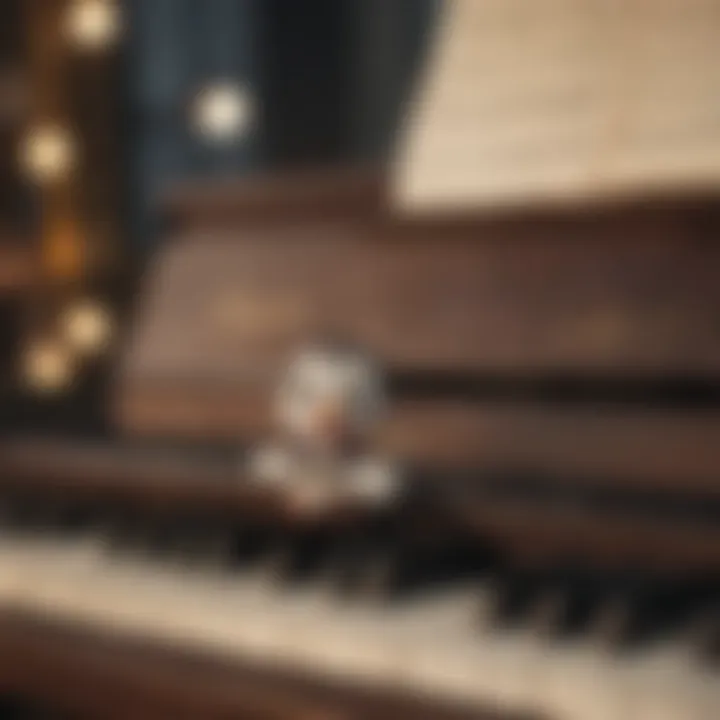
"The music does not simply accompany the game; it shapes player experiences, influencing reactions and interactions."
Furthermore, the soundtrack's recognition extends beyond the game itself. It has garnered critical acclaim, leading to its availability on various streaming platforms. The popularity of the soundtrack has also spurred live performances and arrangements by various artists, showcasing its cultural relevance. Players and musicians alike have embraced Cuphead's music, leading to a community where amateur and professional pianists share their interpretations and arrangements, thus perpetuating the game's influence within and outside the gaming community.
Through all these factors, Cuphead's music is not just a background feature; it is a vital aspect that elevates the entire gaming experience.
Key Compositional Elements
The compositional elements of the Cuphead soundtrack serve as fundamental cornerstones, integral to understanding its tonal landscape and emotional depth. Each aspect contributes significantly to the overall listening experience, making it essential for musicians and fans alike to grasp these components. More than just notes on a page, these elements weave together to create a rich tapestry that defines the music's unique character and style.
Instrumentation and Arrangement
Cuphead's music utilizes an eclectic mix of instruments, which is crucial for achieving its vintage, jazz-inspired sound. Instruments like the piano, trumpet, and clarinet blend seamlessly, evoking a sense of nostalgia reminiscent of early 20th-century American music. The arrangements often feature varied sections, alternating between lively melodies and more subdued segments, maintaining the listener's engagement throughout gameplay.
The arrangement is meticulously crafted. Every layer, from the rhythm section to the melodic lines, complements the others, creating a well-balanced sound. Pianists will find that understanding the arrangement helps in translating the essence of the music onto the piano. Recognizing which instruments carry the main melody versus those that provide background harmony is key to an effective performance.
Melodic Structures
Melodic structure in Cuphead's music displays a notable interplay between simplicity and complexity. The main themes are often catchy and accessible, making them easy for players to remember. However, within these seemingly straightforward lines, there is a wealth of variation. Subtle shifts in pitch, rhythmic modification, and ornamentation enhance the melodic material, allowing for deeper expression.
For aspiring pianists, recognizing these patterns can be immensely beneficial. Exercises focusing on these melodic motifs can aid in developing a strong sense of phrasing and interpretation. Consequently, performers can infuse their playing with emotion reflective of the game's context, whether whimsical or solemn.
Rhythmic Patterns
Rhythm is a defining feature of Cuphead's music, providing energy and drive. The use of syncopation and swings in many pieces creates an infectious groove that pulls the listener in. In particular, the incorporation of varied time signatures adds complexity, challenging musicians while keeping the material engaging.
When adapting the rhythm for piano, it is important to pay attention to these patterns. Pianists should practice slowly at first, ensuring a solid grasp of the rhythms before attempting to play at full speed. This will aid in maintaining clarity and precision. Furthermore, exploring the relationship between melody and rhythm reveals heightened dynamics and expressive possibilities in performance.
"Understanding the compositional elements opens a new level of appreciation for Cuphead's music. Each part contributes not just to the sound, but to the storytelling of the game."
Through a focused study of instrumentation, melodic structures, and rhythmic patterns, musicians can gain a comprehensive understanding of Cuphead's piano sheet music. This foundation enhances not only the performance but also the overall enjoyment of the music and its place within the game's rich artistic framework.
Finding Cuphead Piano Sheet Music
Finding suitable sheet music is an essential element for musicians interested in performing Cuphead's unique soundtrack. The interest in these arrangements comes from the rich musical landscapes found in the game. The ability to translate these compositions onto the piano allows enthusiasts to engage with the music on a deeper level.
Access to reliable sources of sheet music is crucial. It not only ensures the accuracy of the pieces being played but also enhances the overall experience for both the musician and the audience. Curating a library of sheet music that reflects authentic arrangements can also lead to growth in technical skills and interpretative abilities.
Official Sources for Sheet Music
Though widely recognized for its music, Cuphead does not have an extensive commercial release of standalone sheet music. However, several official sources provide reliable options for aspiring pianists. The first point of reference is the game's official website. Many game developers release music books or sheet music collections in conjunction with album releases.
Additionally, platforms like Bandcamp might offer soundtracks along with digital sheet music for purchase. Such sources provide quality arrangements that adhere closely to the original compositions. Accessing music this way ensures not only the fidelity of the arrangements but also supports the composers financially.
Community Contributions and Arrangements
The community around Cuphead is vibrant and creative. Many talented musicians take it upon themselves to create and share their own arrangements of the game's music. Websites like Reddit and forums focused on music often serve as platforms for sharing these community-made sheets.
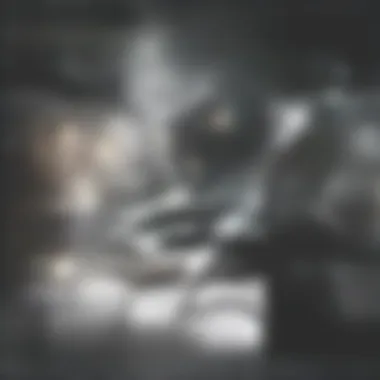

Engaging with these contributions can foster skills in adaptability and creativity. Musicians can find unique arrangements that differ from the originals, allowing for personal expression in play. However, it's important to approach these sources with discernment, as the quality and fidelity may vary. Following certain creators or regular contributors can lead to discovering reliable arrangers whose work consistently resonates with the music's essence.
Evaluating Quality of Arrangements
When encountering sheet music, evaluating its quality becomes essential. Not all arrangements will capture the game's original charm or complexity. Several factors can help assess the sheet music you find:
- Complexity: Does it align with your skill level?
- Accuracy: Is it true to the original composition?
- Playability: Are the rhythms and notations clear?
Engaging with sheet music that feels intuitive not only enhances the enjoyment of playing but also improves learning. Listening to the original score while playing through multiple arrangements can aid in understanding the piece's nuances. This multi-faceted approach can lead to a richer musical experience and a more profound appreciation of Cuphead's enchanting soundtrack.
Adapting the Music for Piano Performance
Adapting the music from Cuphead for piano performance offers both challenges and rewards for musicians. This section focuses on how one can effectively transcribe and arrange these musical pieces while highlighting the benefits and practical aspects involved in the adaptation process. Understanding how to navigate these components is crucial for bringing the essence of Cuphead’s soundtrack to the piano.
Transcription Techniques
Transcribing Cuphead's music requires a thoughtful approach. Musicians need to listen carefully to the original soundtrack, paying attention to both the melody and harmony. Here are some steps to consider when transcribing:
- Listening Repeatedly: Start by listening multiple times to grasp the overall feel and structure of the pieces. Each listen uncovers different layers of complexity.
- Using Notation Software: Programs like MuseScore or Finale can simplify the transcription process. Musicians can notate melodies and harmonies systematically.
- Dividing into Sections: Break the music into manageable parts, such as phrases or sections. This makes it easier to focus on specific elements without being overwhelmed.
"The key to successful transcription lies in detail-oriented listening and structured notating."
Each piece from Cuphead presents unique challenges, so flexibility in technique is vital.
Challenges in Arrangement
Adjusting the music for piano is not without its difficulties. Each challenge requires solutions that can vary from musician to musician. Here are several common challenges:
- Complex Melodies: Some pieces feature intricate melodic lines with rapid notes. Arranging these for piano, while retaining their original feel, can be tricky.
- Layering of Instruments: The original compositions often involve multiple instruments, which can make it hard to decide which parts to prioritize during the adaptation.
- Dynamic Range: Capturing the dynamic nuances of the original pieces is essential. This ensures that performance conveys the intended emotion.
Innovative thinking often leads to creative solutions for navigating these challenges without losing the character of the music.
Practice Strategies for Aspiring Musicians
For those looking to perform Cuphead's music on piano, effective practice strategies are crucial. Here are some approaches to improve practice sessions:
- Segmented Practicing: Focus on small sections of the piece before attempting to play it in full. This builds confidence and technical skill.
- Slow Practice: Start practicing at a slower tempo. Gradually increase speed as comfort with the notes increases.
- Hands Separately: Practice each hand separately to master the technical requirements. This can help isolate tricky passages.
- Recording Practices: Consider recording practice sessions. It provides an opportunity to listen back and identify areas needing improvement.
By embracing these strategies, aspiring musicians can enhance their proficiency and convey the magic of Cuphead's music through their piano performances.
The Cultural Impact of Cuphead's Soundtrack
The soundtrack of Cuphead is not just background music, but a vital component that enhances the game's atmosphere and narrative. Its cultural impact extends far beyond the gaming community, positioning it among notable video game scores. This segment explores various aspects, such as the reception of the music, its role in the game's development, and its influence on contemporary music trends.
Reception Within the Gaming Community
Upon release, Cuphead garnered significant attention for its unique aesthetic and sound. The soundtrack, rich in jazz and early 20th-century musical styles, resonated with both gamers and music lovers alike. Many players praised it as a perfect blend of nostalgia and freshness. Online platforms, including reddit.com, showcase discussions where fans express admiration, highlighting how the music elevates the gaming experience.
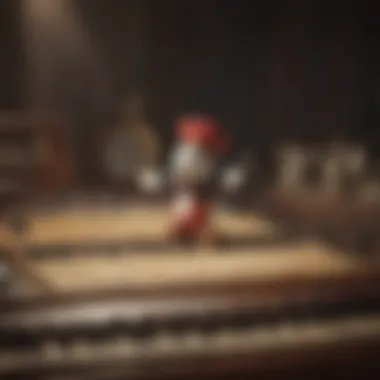
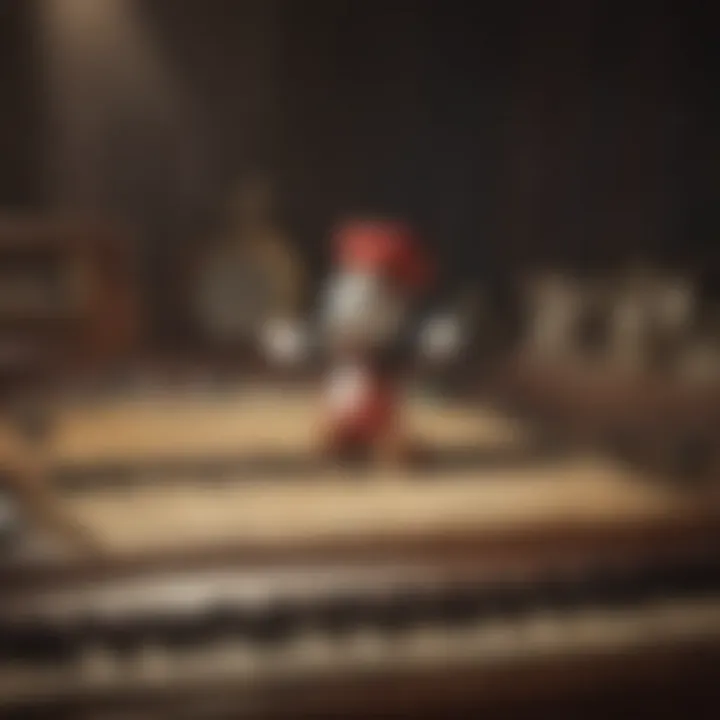
Reviews from various gaming outlets often mention the soundtrack as a highlight, contributing to the overall atmosphere of the game. This warm reception has led to numerous covers and remixes, showcasing the community's appreciation. Piano arrangements, in particular, have gained popularity, reflecting the music's accessibility and charm.
Music's Role in Game Development
In game development, soundtracks can significantly shape the user experience. For Cuphead, the music was integral from the early stages. The development team prioritized a score that not only complemented gameplay but also immersed players in the world of the game. Studio MDHR collaborated closely with composer Kristofer Maddigan, ensuring that each track mirrored the on-screen action and enriched the narrative.
The decision to use live recordings instead of synthesized sounds adds a layer of authenticity. This approach not only elevates the gameplay but also connects players with a genuine art form. It shows how thoughtful sound design can enhance emotional engagement in gaming, which can lead to a more profound connection with the material.
Influence on Contemporary Music Trends
Cuphead's soundtrack is now influencing various contemporary music trends. Its vintage sound has encouraged artists to experiment with similar styles. Jazz and big band music, once on the fringes of mainstream popularity, have seen a resurgence as new generations discover their charm. This can be attributed to the nostalgia factor, as well as the unique blend of modern gaming and classic music forms that Cuphead offers.
In addition, the game's music has sparked interest in live performances of video game music. Concerts specializing in game soundtracks are becoming increasingly popular, largely due to the compelling compositions found in games like Cuphead. The soundtrack not only revives interest in older styles but also encourages a broader appreciation for musical diversity within gaming.
"Cuphead's soundtrack demonstrates how video game music can have a lasting impact, shaping both player experiences and broader musical landscapes."
Through these elements, the cultural impact of Cuphead's soundtrack becomes evident. It establishes a significant connection between gaming and music, leading to continued exploration of both fields.
The Future of Cuphead Music
Examining the future of Cuphead's music involves not only the potential for new arrangements and releases but also a shift in how music adaptation might alter the landscape of gaming music. This insight tailors to music enthusiasts, aspiring musicians, and students who wish to explore the evolving nature of video game soundtracks.
Potential New Arrangements and Releases
As the interest in Cuphead persists, the demand for fresh interpretations of its music will likely continue to grow. New arrangements could emerge from various sources, including artists and composers inspired by the game's distinct sound.
Both official and unofficial releases can cater to this urge for novelty. Official arrangements might be released by Studio MDHR, while independent musicians may take the initiative to create their own renditions. This interplay between formal and informal contributions may enrich the overall musical landscape tied to Cuphead.
Some possible avenues for exploring these new arrangements are:
- Expanded sheet music collections: As the game's popularity endures, publishers may look to compile comprehensive collections of sheet music, catering specifically to different skill levels.
- Collaborations with renowned musicians: Prominent artists might engage with Cuphead's music, offering adaptations that blend their unique styles with the original score.
- Virtual concerts and sessions: The rise of live streaming platforms enables musicians to perform and reinterpret the music from Cuphead, drawing audiences who appreciate both gaming and live performance.
Changes in Music Adaptation Practices
The adaptation of Cuphead's music is evolving. Increased access to technology and online resources allows musicians of various backgrounds to interpret and perform these compositions. This accessibility presents both challenges and opportunities.
- Emergence of beginners: More aspiring musicians can experience and engage with Cuphead's music thanks to simple digital tools. As a result, the landscape of music interpretation will reflect diverse skill levels and styles.
- Shift to collaborative platforms: Online communities like Reddit serve as a breeding ground for shared ideas and collaborative arrangements, promoting collective creativity.
- Focus on educational resources: The growing availability of tutorials, guides, and transcription software influences how musicians approach learning and performing Cuphead's score.
In summary, the future of Cuphead's music holds great promise. Potential new arrangements offer exciting opportunities for collaboration and reinterpretation. Changes in adaptation practices create a more inclusive environment, fostering a greater appreciation of Cuphead's unique sound in the gaming community.
Epilogue
The conclusion of this article ties together various aspects related to Cuphead piano sheet music, emphasizing its importance in the broader context of musical appreciation. The intricate musical compositions featured in Cuphead not only reflect the game’s unique visual style but also capture the essence of its narrative. For musicians and enthusiasts alike, understanding these compositions can enhance their appreciation and performance of the piano arrangements available.
Summary of Key Points
Throughout the article, several important points have been highlighted concerning Cuphead's music and its piano sheet arrangements:
- Musical Style: Cuphead's musical score is distinguished by its blend of jazz, big band, and early 20th-century influences.
- Instrumentation: The use of traditional instruments plays a significant role in creating the game’s sound.
- Sheet Music Sources: Both official and community-based resources offer rich repositories for sheet music enthusiasts to explore.
- Transcription Challenges: Musicians face unique challenges when arranging music for piano that originates from the complex scores of Cuphead.
- Cultural Impact: The soundtrack has left a significant mark on both the gaming industry and contemporary music trends.
Final Thoughts on Cuphead's Musical Legacy
Cuphead's musical legacy is multifaceted, impacting both the gaming community and the wider music landscape. This game has sparked interest among aspiring musicians, encouraging them to engage with and learn from its intricate compositions. The influence of Cuphead’s music extends beyond its direct audience, inspiring new generations of musicians and composers. Its successful integration of retro styles with modern gameplay creates a novel experience that resonates well with a diverse audience. Thus, the musical exploration of Cuphead not only serves as a rich learning resource but also a celebration of timeless musical artistry.
"The magic of Cuphead's soundtrack lies in its ability to connect with players on both emotional and artistic levels."







